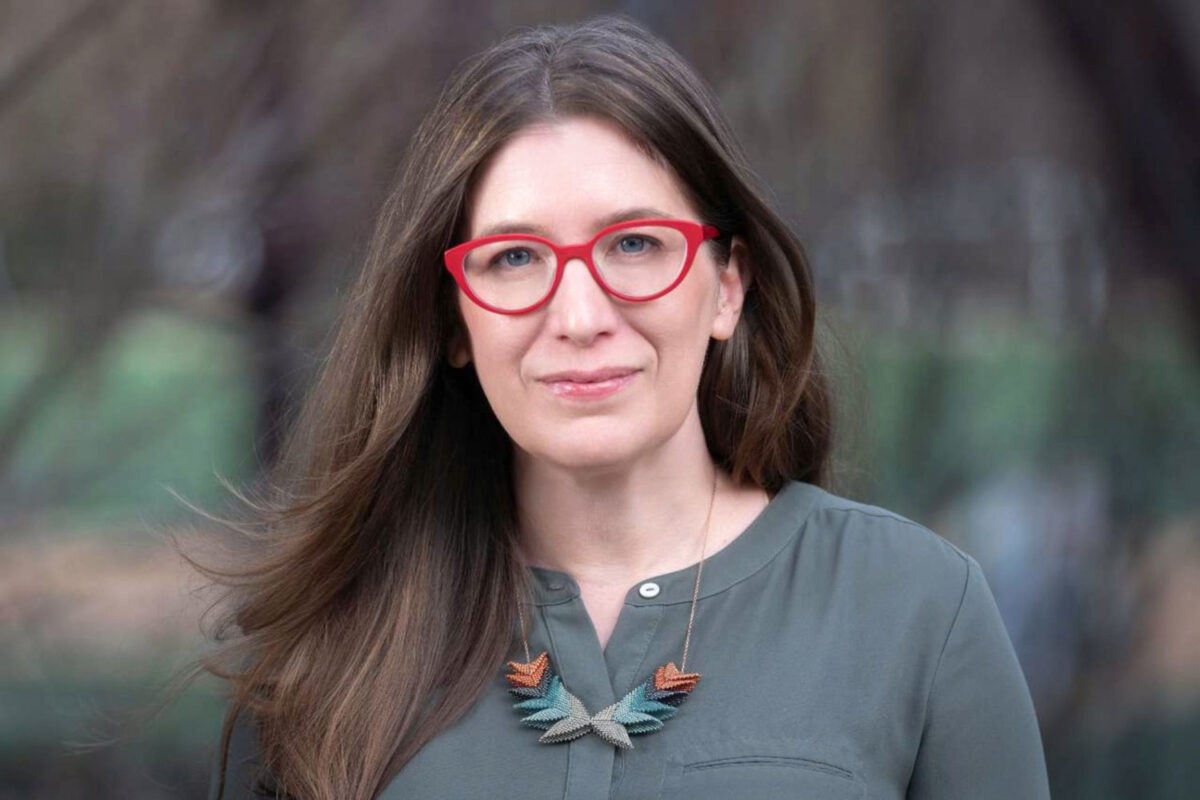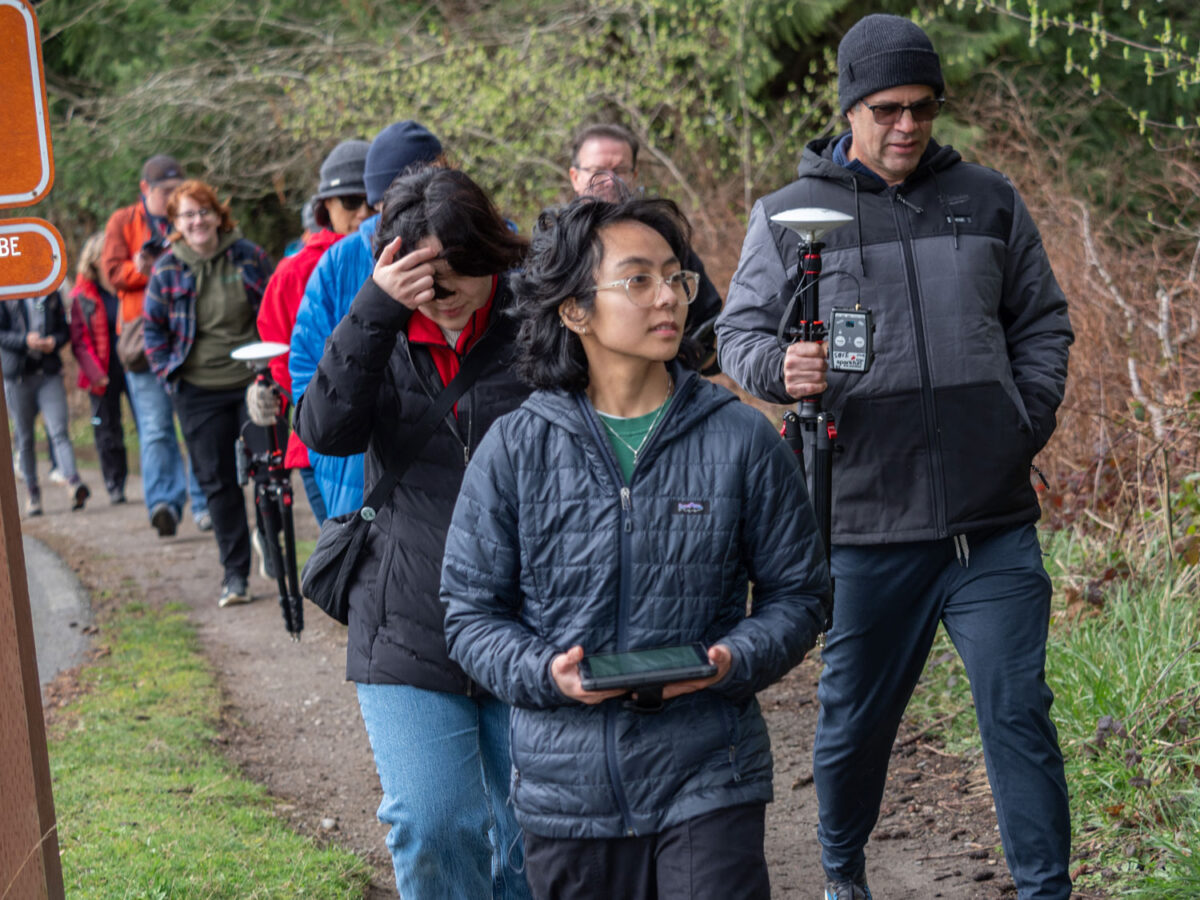From K-12 to higher education, context plays an important role in our ability to teach and learn new concepts. Communicating the real-world application of knowledge is an important part of learning, and one of the most effective ways of achieving this is through storytelling.
The power of stories as teaching tools permeates all academic disciplines — from a retelling of history to a mathematics word problem and even, as it turns out, the journey of a molecule.
Dr. Caleb Trujillo explores the benefits of molecular storytelling in teaching biology and chemistry in his latest research, “Molecular storytelling: a conceptual framework for teaching and learning with molecular case studies,” recently published in the Frontiers in Education journal.
“There are some really big benefits to teaching with case studies, such as supporting problem-based learning,” said Trujillo, assistant professor in the University of Washington Bothell’s School of Interdisciplinary Arts & Sciences. “Molecular storytelling is really about being able to help students explain the living world and how it works through the relationships of various molecules.”
Creating a tool for educators
Trujillo first became involved in molecular storytelling research when he was approached in 2020 by Dr. Shuchismita Dutta, associate research professor at Rutgers University and principal investigator of the Molecular CaseNet project. The five-year project, funded by a National Science Foundation grant, aims to create a network of educators interested in using and developing molecular case studies for teaching biochemistry.
Trujillo was advising Dutta on another project in 2018 when he expressed interest in the CaseNet research. Trujillo then joined the team as a co-principal investigator and put his background in developmental molecular biology and teaching experience to work.
“Caleb is an education researcher and is focused on understanding how the teachers are evolving as they participate in Molecular CaseNet activities,” Dutta said. “We each bring different skills and experiences to the table, so I think that this is a great collaboration.”
While she works with educators to develop the case studies, Dutta added, Trujillo is focused on the educators’ confidence in using biomolecular structures and other resources in their teaching. As part of his role, Trujillo said, he interviews participating educators to learn about their current experiences.
“A big thing in science education today is that we’re trying to get students to do the practice of science in the classroom and get away from book memorization,” Trujillo said. “Moving to a more practice-oriented teaching method with structured exercises that engage students can better prepare them to do problem-solving work.”
Developing case studies
What makes molecular storytelling unique, Trujillo said, is that it’s a teaching practice that leverages a narrative view, rather than the more traditional approach of rote memorization.
“At the center of these narratives are the relationships that molecules go through in order to work inside the cell and create life as we know it,” he said. “Helping students see molecules as characters — with their own actions, relationships and journeys — through impactful and engaging case studies can draw them in and motivate them to learn.”
The case studies developed by the team center the structure of proteins and other biomolecules. An example of these narratives is one called the “Happy Blue Baby.” In this study, a baby that has turned blue in color is brought in for a series of diagnostic tests. The students are challenged to look for the cause and hopefully find a mutation in the molecule, leading to an understanding of what is making the baby turn blue.
By going through the process of finding the mutation and visualizing where it exists in the structure, students are also able to start conceptualizing ways to solve the problem. “In doing that, they start to realize that a lot of the variations we see in people — including the disabilities and diseases we might experience — come down to these very small changes at the molecular level,” said Trujillo.
Another narrative example of that is the COVID-19 virus and its variants.
Making them relevant
“The COVID-19 variations come from small mutations that happen in the viral code. These variations can mean the difference between a strain that is more contagious or a strain that is more dangerous and able to gain access to our lungs,” Trujillo said. “Those variants make us vulnerable, and it can be quite scary to think that something so small can have a drastic impact on human health and society.”
While these small differences in viral code can be detrimental to human health, Trujillo added that the ability to manipulate the viral code is one of the greatest advances in modern medicine — allowing vaccinations and immunizations to rewire the immune system to better fight the virus.
The Molecular CaseNet project launched at the beginning of the pandemic so there was a pressing need to create a practice-based curriculum suitable for a virtual learning environment. This sparked interest from educators looking for innovative ways to engage students during remote learning.
Educators who participate in the network are tasked with using a case study and then compensated for creating the materials they need to bring it into their classroom. “A lot of people want to change the way they teach, but they don’t have the capacity or the resources or the community to do it,” Trujillo said. “What’s wonderful about this group is that we teach toward a major gap. Biology and chemistry are siloed, and we need opportunities and instructors who can work across disciplines to teach biomolecules.”
An evolving framework
Together with undergraduate researcher Kit Thompson, a junior majoring in Psychology and minoring in Neuroscience, Trujillo is currently analyzing interviews from various educators in the network who have begun implementing the case studies into their teaching.
Thompson is quite hopeful the project will make a real difference in students’ classroom experiences. “Hearing how the instructors have grown more confident in both the material they’re teaching and the technology they’re using is really encouraging when I think about how this project can have an impact on teaching and learning long term,” he said.
Trujillo noted that while implementing molecular storytelling into the classroom is an important step, it is an ongoing process to discover what actually works and to adapt to the needs of different educators and their students.
“We’re evolving because we’re listening to the participants and understanding what’s working in the classroom and also what students might be getting tripped up on,” he said. “Each course is going to have its own nuances for learning and its own technology to support that.
“A person who’s able to navigate those spaces can really help us develop a better framework for teaching as we collaborate together.”




